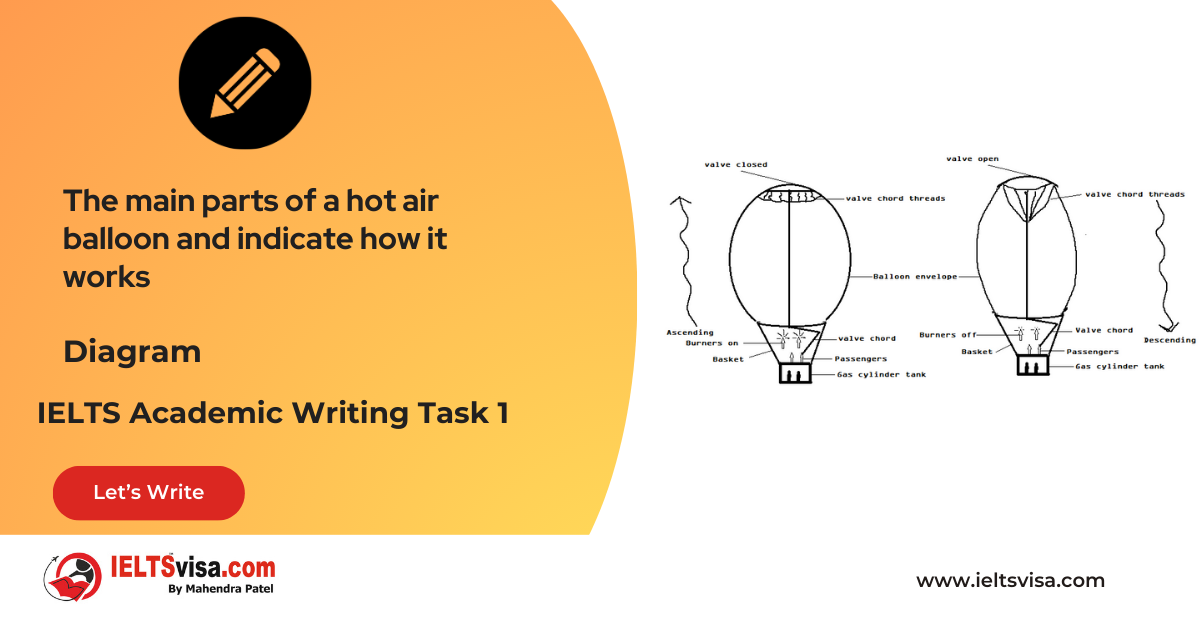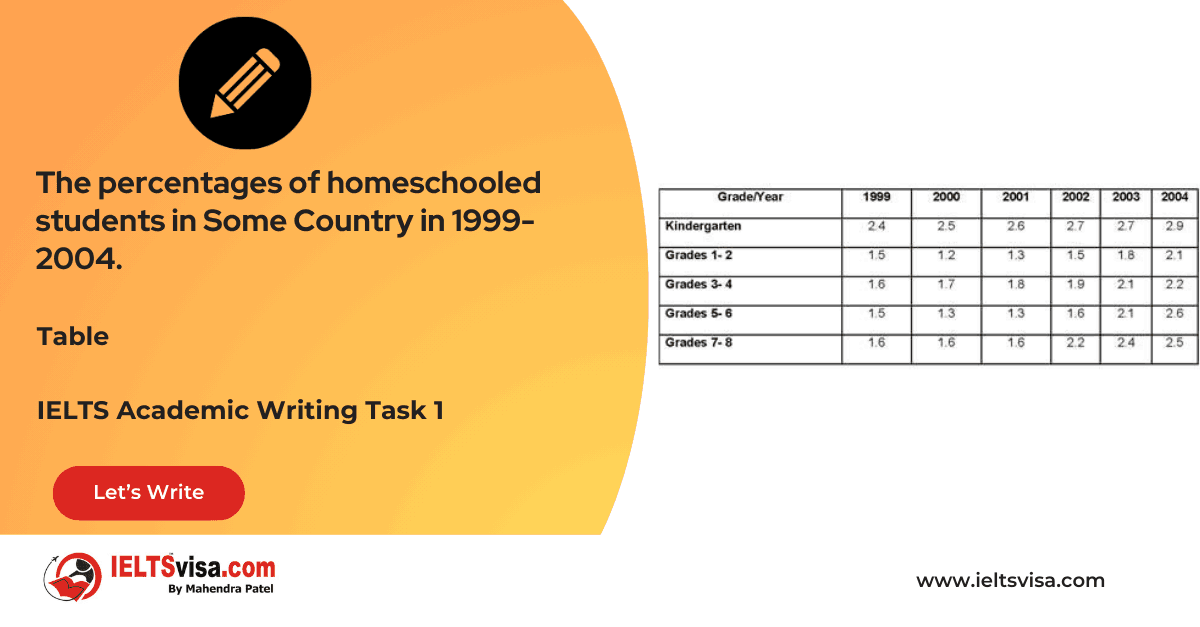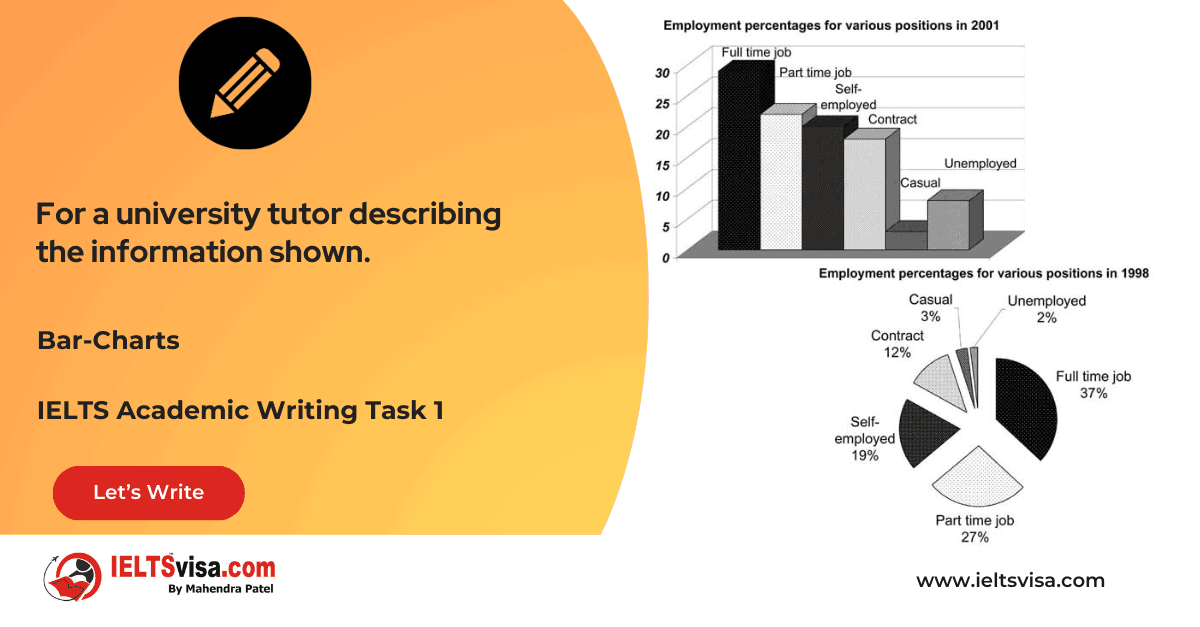The process of canning of fish.
IELTS Academic Writing Task 1 - Diagram
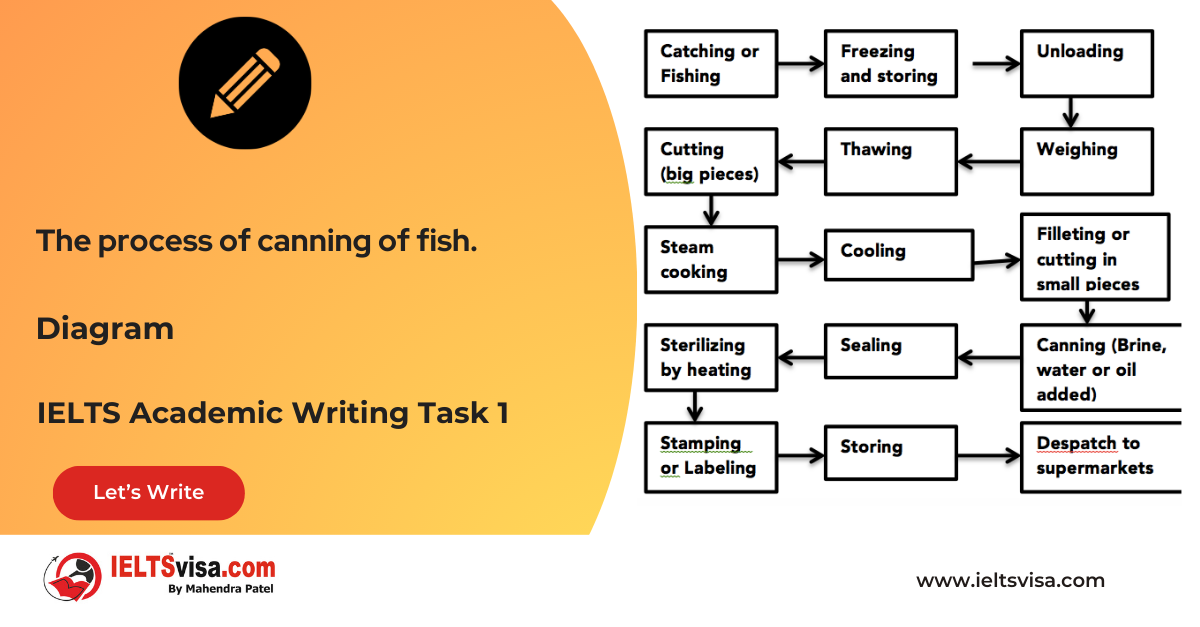
IELTS Writing Task 1 Question
The diagram below shows the process of canning of fish. Write a report for a university lecturer describing the process below.
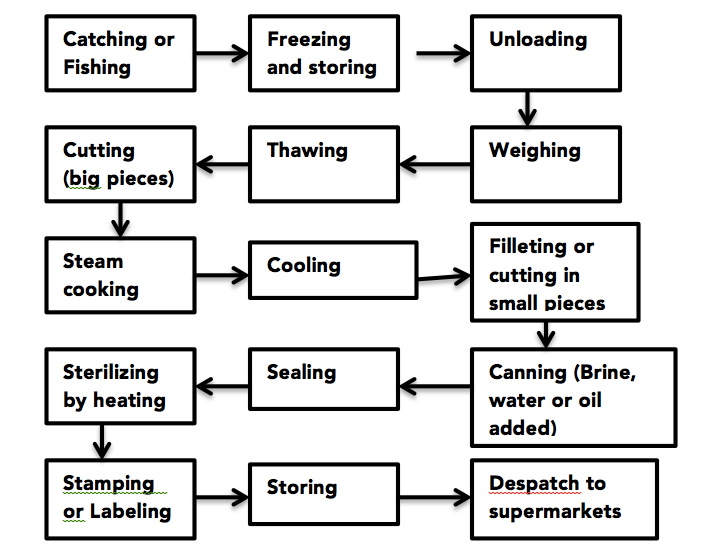
Common questions for the canning process diagram
1. Graph Type: Process diagram (flowchart).
2. Title: The Process of Canning Fish.
3. What are the units of measurement?: Number of steps involved in the canning process.
4. Who: The process involves fish, workers, and canning facilities.
5. When: The process starts when the fish is caught and continues through to the final product.
6. Where: The process takes place in a canning factory.
7. Topic: The diagram outlines the series of steps in the fish canning process.
Comparison Showing and Trends
Comparison 1 : Fish Preparation
- The fish go through a series of steps involving thawing, cutting into large pieces, steaming, and cooling before they are finally filleted and reduced into smaller pieces.
Comparison 2 : Packaging and Sealing
- After preparation, the pieces are canned with brine, water, or oil. These cans are sealed and sterilized to ensure the fish remains fresh and safe for consumption over an extended period
Comparison 3 : Final Stages
- The cans are stamped or labeled before being stored and dispatched to supermarkets, making the final product ready for sale.
Sample Answer
The diagram illustrates the detailed process involved in the canning of fish. The procedure consists of 15 steps, beginning from the catch of the fish to their final dispatch to supermarkets.
The process starts with the fish being caught and frozen, then stored until they are ready for further processing. The frozen fish are unloaded, weighed, and thawed. After thawing, the fish are cut into large pieces and steam-cooked.
Following the cooking, the fish are cooled and filleted or cut into smaller pieces. These pieces are then placed in cans, where brine, water, or oil is added. The cans are sealed and subjected to a sterilization process through heating. After sterilization, the cans are stamped or labelled, and finally, the products are stored and dispatched to supermarkets for sale.
Overall, the canning of fish involves a systematic and detailed process to ensure the freshness of the product and its ability to remain consumable over a long period.
Top 26 Vocabulary
| Vocabulary | Meaning | Synonyms | Examples | Type |
| Thaw | To unfreeze or warm something frozen | Defrost, melt | “The frozen fish are thawed before being cut into pieces.” | Verb |
| Fillet | To remove the bones from fish or meat | Debone, slice | “The fish are filleted into smaller pieces after cooking.” | Verb |
| Sterilize | To treat with heat or chemicals to kill bacteria | Sanitize, disinfect | “The cans are sterilized to ensure the fish is safe for consumption.” | Verb |
| Brine | A solution of salt in water used for preserving food | Saltwater, solution | “Brine is added to the cans to preserve the fish.” | Noun |
| Dispatch | To send or deliver goods to a destination | Send, deliver, distribute | “Once the cans are labeled, they are dispatched to supermarkets for sale.” | Verb |
| Catch | To capture or take hold of something, typically fish | Capture, seize | “The fish are caught from the ocean before processing begins.” | Verb |
| Frozen | Turned into ice or cold storage form | Iced, chilled | “The fish are frozen immediately after being caught.” | Adjective |
| Unload | To remove goods or items from a vehicle or container | Unpack, empty | “The frozen fish are unloaded from the transport vehicles.” | Verb |
| Weigh | To measure the weight of something | Measure, gauge | “The fish are weighed to ensure the proper quantity for canning.” | Verb |
| Steam-cook | To cook by using steam instead of direct heat | Boil, steam | “The fish are steam-cooked to ensure they are tender.” | Verb |
| Cut | To divide or slice into parts | Slice, chop | “The fish are cut into pieces after being thawed.” | Verb |
| Cool | To lower the temperature or make something less hot | Chill, refrigerate | “The fish are cooled after being steamed.” | Verb |
| Piece | A part or portion of something, often cut into smaller parts | Segment, portion | “The fish are cut into small pieces before being canned.” | Noun |
| Add | To include or insert something into something else | Insert, include | “Brine or water is added to the fish pieces in the cans.” | Verb |
| Seal | To close or fasten something tightly | Close, secure | “The cans are sealed tightly to keep the fish fresh.” | Verb |
| Subject | To make someone or something experience a certain process | Expose, undergo | “The cans are subjected to a heating process for sterilization.” | Verb |
| Label | To attach a tag or identifier to something | Tag, mark | “The cans are labelled before being stored in warehouses.” | Verb |
| Process | A series of actions or steps taken to achieve a result | Procedure, method | “The fish undergo a detailed process before being canned.” | Noun |
| Store | To keep or save for later use | Keep, stock | “The canned fish are stored in a warehouse until distribution.” | Verb |
| Supermarket | A large store that sells food and other goods | Grocery store, market | “The canned fish are dispatched to supermarkets for sale.” | Noun |
| Freshness | The quality of being new or not spoiled | Novelty, newness | “The process ensures the freshness of the fish for long storage.” | Noun |
| Remain | To continue to be in a particular state or condition | Stay, last | “The fish remain safe to eat for a long period after canning.” | Verb |
| Ensure | To make certain or guarantee something | Guarantee, assure | “The canning process ensures the product is safe and fresh.” | Verb |
| Systematic | Done according to a system or plan | Methodical, organized | “The canning of fish follows a systematic approach.” | Adjective |
| Detailed | Including many small facts or steps | Thorough, precise | “The diagram outlines the detailed steps in the canning process.” | Adjective |
| Consumable | Able to be consumed or used | Edible, usable | “The canned fish remains consumable for months.” | Adjective |

Our Books
Master IELTS Speaking Part 1
IELTS Writing Task 1 Book
IELTS Writing Task 2 Book
Writing Task 1 Question Types
Practice IELTS Other Modules
IELTS Listening
The IELTS Listening test assesses how well you can understand spoken English in various contexts. It lasts about 30 minutes and is divided into four sections with a total of 40 questions. The listening tasks become increasingly difficult as the test progresses.
IELTS Academic Reading
The IELTS Academic Reading section assesses your ability to understand and interpret a variety of texts in academic settings. It is designed to evaluate a range of reading skills, including skimming for gist, reading for main ideas, reading for detail, understanding inferences, and recognizing a writer's opinions and arguments.
IELTS Speaking
The IELTS Speaking test assesses your ability to communicate in English on everyday topics. It lasts 11-14 minutes and consists of three parts: introduction, cue card, and a discussion based on the cue card topic.
IELTS General Reading
IELTS General Reading tests your ability to understand and interpret various types of texts. Here are some key areas and types of content you can expect to encounter in the reading section, along with tips for effective preparation.
IELTS Academic Writing Task 1
In IELTS Academic Writing Task 1, you are presented with a visual representation of information, such as graphs, charts, tables, or diagrams, and you are required to summarize, compare, or explain the data in your own words.
IELTS General Writing Task 1
In IELTS General Writing Task 1, you are required to write a letter based on a given situation. The letter can be formal, semi-formal, or informal, depending on the prompt. Here’s a breakdown of the key components to include in your letter
IELTS Academic Writing Task 2
In IELTS Academic Writing Task 2, you are required to write an essay in response to a question or topic. Here’s a guide to help you understand the essential elements of this task
IELTS Exam Tips
To succeed in the IELTS exam, practice regularly, familiarize yourself with the test format, improve your vocabulary, develop time management skills, and take mock tests to build confidence.
Grammer for IELTS
Grammar is the foundation of effective communication in English. Understanding tense usage, subject-verb agreement, and sentence structure enhances clarity and coherence in writing and speaking.
Vocabulary for IELTS
Vocabulary plays a crucial role in the IELTS (International English Language Testing System) exam, especially in the Speaking and Writing sections. Here’s an overview of why vocabulary is important and how it impacts your performance
RECENT IELTS SAMPLES QUESTIONS AND ANSWERS
Task 1 – Diagram – A conference hall built in 1981 and planned for 2020
20:00 Start Pause Stop [df_adh_heading title_infix="IELTS Writing Task 1 Question" use_divider="on"...
Task 1 – Table – The percentages of homeschooled students in Some Country in 1999-2004.
20:00 Start Pause Stop [df_adh_heading title_infix="IELTS Writing Task 1 Question" use_divider="on"...
Task 1 – Table – For a university tutor describing the information shown.
20:00 Start Pause Stop [df_adh_heading title_infix="IELTS Writing Task 1 Question" use_divider="on"...
Task 1 – Bar-Charts – The way people of Some country invested their money during the years 2001 – 2006
20:00 Start Pause Stop [df_adh_heading title_infix="IELTS Writing Task 1 Question" use_divider="on"...
Task 1 – Diagram – Rainwater Harvesting and Conversion to Drinking Water in an Australian Town.
20:00 Start Pause Stop [df_adh_heading title_infix="IELTS Writing Task 1 Question" use_divider="on"...
Task 1 – Column graph – Percentage of Young People Enrolled in Universities in 2000 and 2007.
20:00 Start Pause Stop [df_adh_heading title_infix="IELTS Writing Task 1 Question" use_divider="on"...

